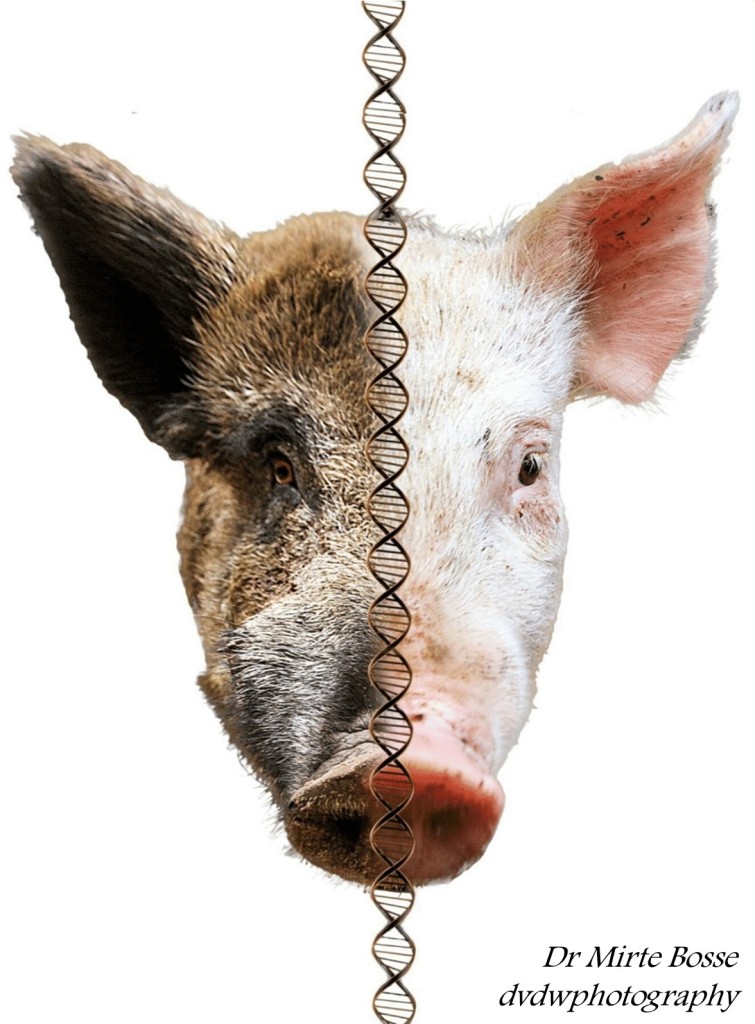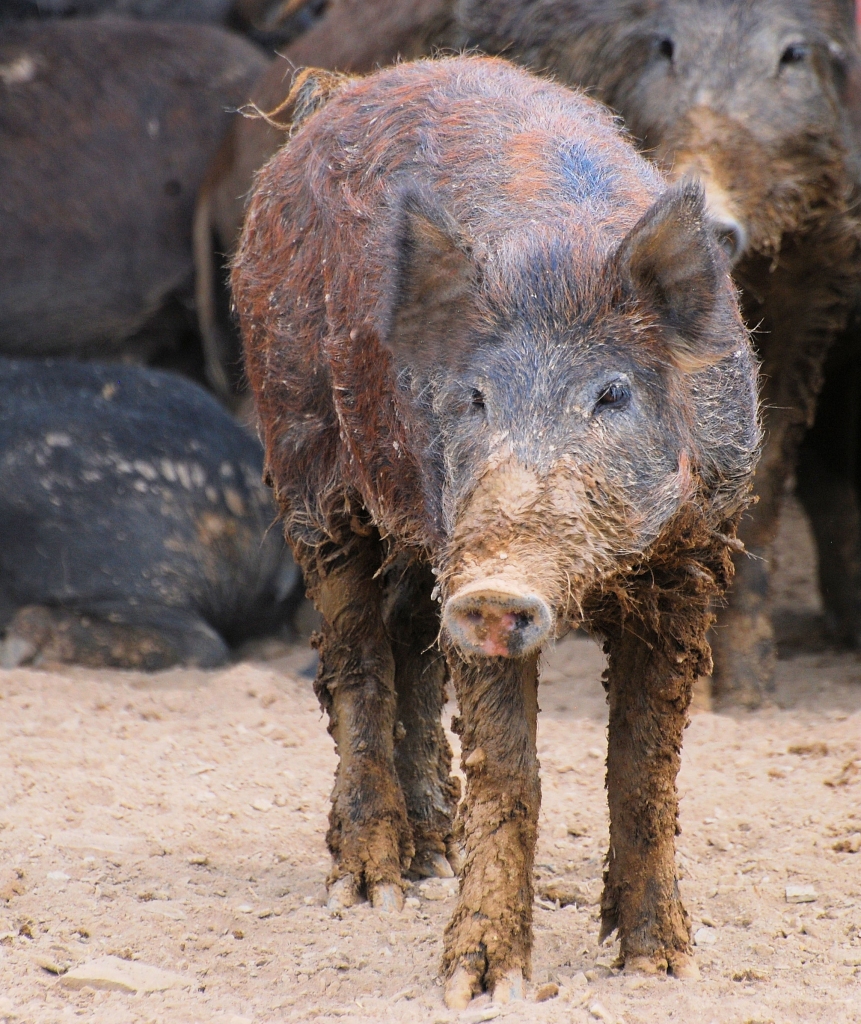Understanding how and why some species readily invade new habitats is an interesting view into the myriad ways species evolve. Limiting the expansion of such introduced species can be important for managing ecosystems, particularly when the invasive species is as ecologically destructive and economically costly as the feral swine in the US south. In a paper published recently in Molecular Ecology, researchers led by Dr. Tim Smyser investigated the origins of the invasive feral swine populations to determine how much the expanding footprint of this species was a due of recently escaped domesticated pigs. Surprisingly, they found that the expanding range was largely attributable to range expansion by the established invasive swine population. Read on to for more details from Dr. Smyser into this very interesting work!

What led to your interest in this topic / what was the motivation for this study?
Invasive feral swine have expanded rapidly throughout the United States over the past 30 years. The impetus for the study was to identify the drivers for that expansion, to ask: where are new feral swine populations coming from? Prior to our work, there was a hypothesis that domestic pigs had sufficient phenotypic plasticity that they would revert to a wild phenotype, resembling a wild boar, if living in the wild. Under this hypothesis, any pig farm could have served as a viable source population for invasive feral swine. With this study, we revealed that there is very little direct contribution to invasive feral swine populations from domestic pigs, potbellied pigs, or wild boar. Rather, the rapid expansion observed over the past 30 years has been driven by incremental range expansion of established invasive feral swine, which overwhelmingly represent animals of mixed European wild boar-heritage domestic breed ancestry, and long-distance translocation of feral swine from established populations to uninvaded habitats.
What difficulties did you run into along the way?
The challenges were largely computational. We had amassed over 9,000 genotypes by the time we compiled the reference set and generated genotypes from invasive feral swine genotypes for this study. Such a large dataset required that we do everything we could to optimize runtime efficiency. Even with these efforts, the analysis still took about 4 months of runtime while using 30 CPUs with 60 threads.
What is the biggest or most surprising innovation highlighted in this study?
I would say the most surprising result was the very high proportion of invasive feral swine that had a significant ancestry association to European wild boar. The historical record suggests wild boar releases have been far more limited than the potential for domestic pig releases, yet 97% of feral swine had significant European wild boar ancestry. This might suggest hybrid wild boar-domestic pig ancestry is biologically important for feral swine to establish self-sustaining populations and become invasive.
Moving forward, what are the next steps in this area of research?
Descending from this work, our next steps are multifaceted. With this analysis, we have identified the drivers of range expansion at a broad-scale with ancestry results pointing to the expansion of established populations. We are now interested in adding a fine-scale understanding of expansion to identify the specific sources of newly emergent populations and map the patterns of feral swine expansion. Also, this analysis has provided an understanding of the ancestral composition of invasive feral swine. Given the hybrid origin of these animals, we will identify elements of the genomes from their ancestral groups, that is heritage breeds of pig and European wild boar, that have been selectively retained in feral swine. By describing selective sweeps relative to ancestral groups, this analysis will allow us to describe the evolution of invasiveness among feral swine.
What would your message be for students about to start developing or using novel techniques in Molecular Ecology?
The field of Molecular Ecology is changing so quickly that it is hard as a scientist to keep up, from both a computational/statistical standpoint and with all the new molecular techniques and analyses that allow us to dive deeper into the genome than we had previously imagined. My recommendation for students would be to not let the lack of a specific skill deter you from asking interesting questions – take the time to develop the needed skill sets or develop collaborations to facilitate your learning or use of those skills. Also, keep asking questions – don’t be content with the answers we are able to resolve today.
What have you learned about methods and resources development over the course of this project?
Reflecting back on my answer immediately above, when I started asking the question of what are the drivers of invasive feral swine range expansion, I did not have the data or the skills to meaningfully address that question. Through the development of a great team of collaborators and independent learning, I was able to assemble the needed skills and then the data to pose this question and reveal interesting results. Through this project, I learned about the statistical tools used in the analyses, developed the coding skills necessary to execute those analyses, and identified strategies to maximize computational efficiency as was needed for working with such a large dataset.
Describe the significance of this research for the general scientific community in one sentence.
We have demonstrated that the recent and rapid expansion of feral swine, an ecologically destructive and economically costly invasive species distributed throughout much of the US and the world, has been facilitated by movement (in many cases anthropogenic movement) from established populations to uninvaded habitats as opposed to novel introductions of either domestic pigs or wild boar.
Describe the significance of this research for your scientific community in one sentence.
In identifying the admixed origins of invasive feral swine, descending from heritage domestic pig breeds and European wild boar ancestry, we can begin to gain an understanding of the evolution of invasiveness for this species and invasive species more broadly.

Smyser TJ, Tabak MA, Slootmaker C, Robeson MS, Miller RS, Bosse M, Megens H-H, Groenen MAM, Rezende Paiva S, Assis de Faria D, Blackburn HD, Schmidt BS, Piaggio AJ. 2020. Mixed ancestry from wild and domestic lineages contributes to the rapid expansion of invasive feral swine. Molecular Ecology. https://doi.org/10.1111/mec.15392
